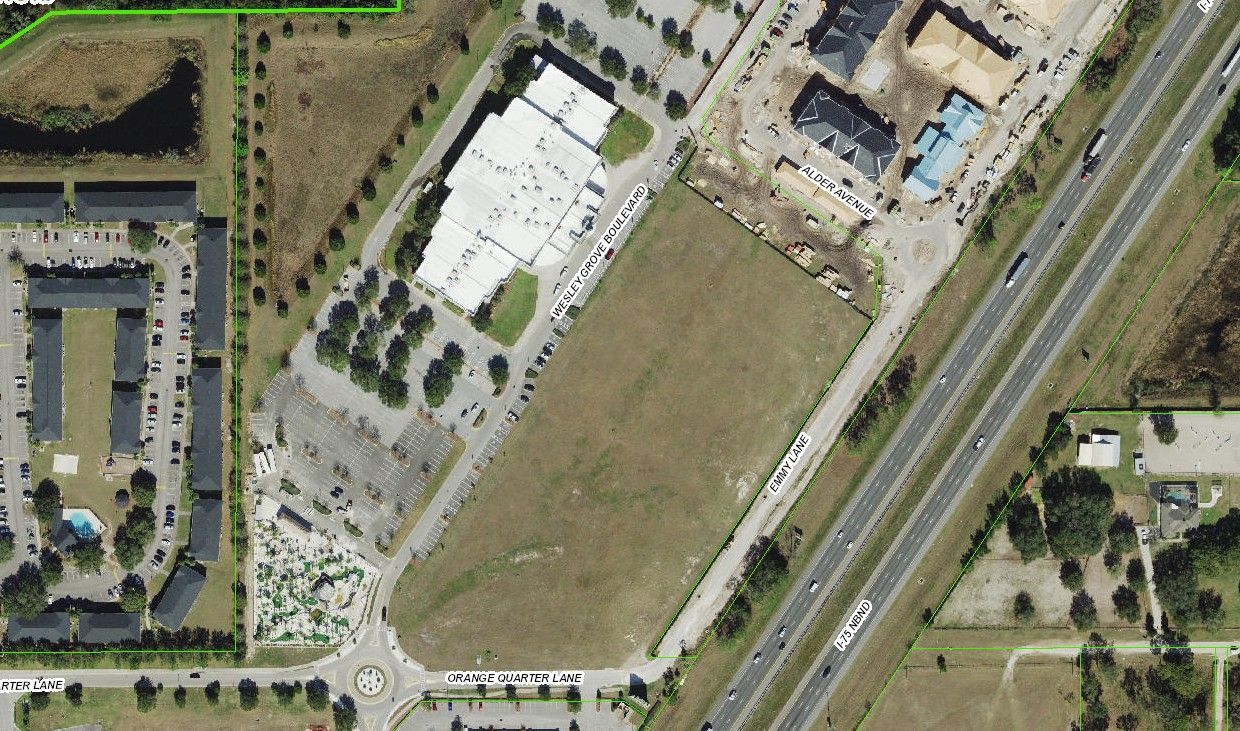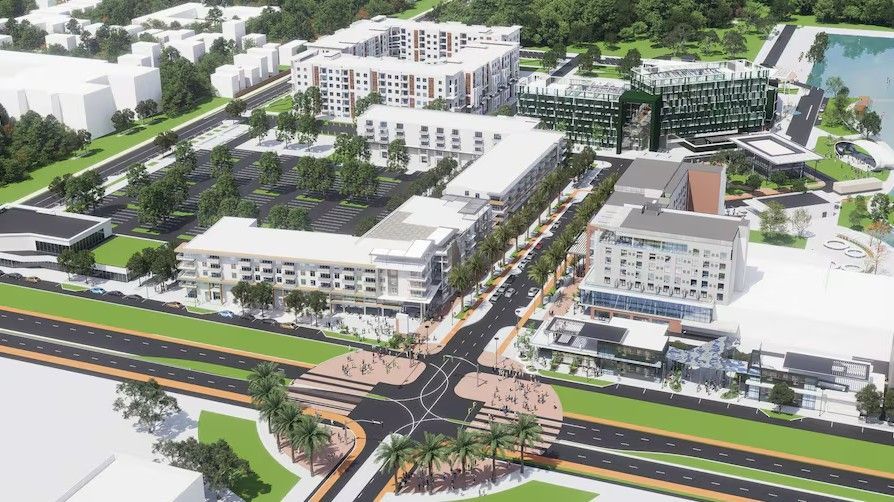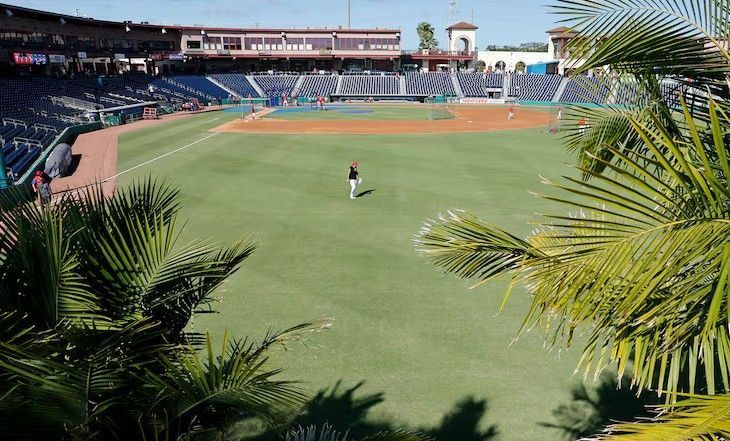The Trinity Project : Storyland Studios Announces 800+ Acre Sports Complex
Trinity, Florida : The Future of Sports and Lifestyle Communities in America

Storyland Studios has just announced one of the most ambitious community projects in the U.S., with plans to turn over 800 acres in Pasco County, Florida, into the nation’s largest sports and lifestyle hub. Revealed at the 2024 IAAPA Expo in Orlando, the “Trinity” project is set to transform North Tampa into a year-round destination for sports fans, families, and other visitors. They are hoping to blend sports, arts, wellness, and sustainability in order to serve athletes, fans, and residents while promoting a dynamic, eco-friendly community in Florida’s rapidly growing area. The Trinity project is set to become the largest sports entertainment development in the U.S., covering a space that is six and a half times the size of Disney Springs
A Destination for Sports and Entertainment
The Trinity Project will feature a wide variety of sports facilities, including soccer and baseball stadiums, ice rinks, and basketball arenas, having events from youth tournaments to professional sporting events. The development will also include hotels, housing, retail, dining, medical, and cultural spaces, which will make it a multi-use destination for not only tourists, but locals as well. Some major highlights of the development will include a professional soccer stadium, a 7,500-seat baseball stadium, five ice rinks, a basketball arena, and a multi-field training center. There will also be an outdoor adventure park and a performing arts center for events. Matt Ferguson, Chief Innovation Officer at Storyland Studios, emphasized the project's goal to be a place where athletes, teams, and families can gather and create lasting memories. He stated that, "A story is waiting to be shared here by athletes, coaches, teams, and the families who will gather on these acres from across the country”.
A Community Focused on Health, Wellness, and Sustainability
While sports and entertainment are central to the Trinity project, Storyland Studios also aims to create a community that promotes a ‘healthy lifestyle’. The development will include wellness amenities like medical centers, parks, and open spaces for recreation, as well as opportunities for arts and cultural activities. This all resonates with their mission statement of creating “a better world by designing and creating immersive experiences that lift the spirit”. The project will also focus on sustainability, with plans to make Trinity carbon-neutral by using renewable energy, water conservation systems, and eco-friendly landscaping. CEO Johnny Scott stated that, "this project is a gift to our community, and we are committed to protecting and enhancing the region’s resources while welcoming visitors from around the world”. Truly emphasizing their commitment to preserving resources while welcoming visitors, and setting a new standard for sustainable development.
Economic Growth and Infrastructure Investment
The Trinity project is not just a sports and lifestyle destination but also an economic driver for Pasco County, located just north of Tampa. With thousands of visitors expected each year, it will create new job opportunities, boost local businesses, and attract more tourists. In addition to its sports and entertainment attractions, Trinity will address infrastructure challenges by investing in road upgrades, water systems, and power solutions. Orton Varona, Chief Strategy Officer for Trinity Development Initiative, stated that, “The core of this project is what Trinity needs.” The development will bring world-class facilities to an area that has been struggling with the infrastructure to support its growth. Ultimately, Trinity aims to transform the community, enhancing residents' quality of life while also positioning itself as a top destination within Florida’s rapidly growing “Sports Coast” region.
Controversy and Community Concerns
The Trinity project has sparked a lot of mixed reactions within the local community. While some residents are excited about the potential to boost the economy, providing many recreational opportunities, others are concerned about its impact on infrastructure, the environment, and the area's character. Many worry that existing roads and utilities are already stretched thin and that the 800-acre site could hinder many local wildlife habitats. Local resident Maria Stevens expressed concerns about traffic congestion, saying, “Our roads are already overwhelmed, and this project will only make it worse.” Environmental advocate Paul Hanson has similar fears, worrying about the long-term effects of paving over natural spaces. In response, Trinity Development Initiative (TDI) has promised to invest in infrastructure improvements and use sustainable practices in the design. As plans move forward, it remains to be seen if the development can balance growth with sustainability and meet the needs of both current and future residents.
A Promising Future, With Challenges Ahead
Overall, this project represents an ambitious vision for the future of sports entertainment and community development. While it promises to bring several benefits, such as economic growth, job creation, and state of the art sports facilities, it also faces challenges in terms of community engagement, environmental impact, and infrastructure support. As construction moves forward, collaboration between developers and residents will be crucial to addressing concerns and making sure the development meets the needs of all stakeholders. If this is successful, Trinity could become not only a top destination for athletes and sports fans but also a model for sustainable, community-centered developments. Trinity has the potential to redefine what it means to live, work, and play in a modern American community.
Sources : Storyland Studios | Welcome to Trinity | ABC Action News
Thank you for your interest. If you are in need of Appraisal & Valuation services in the West Central Florida Market, contact:
Mike Cliggitt, MAI, MRICS, CCIM
813.405.1705 | 863.661.1165 - Direct Lines
findvalue@cliggitt.com
SHARE CONTENT





